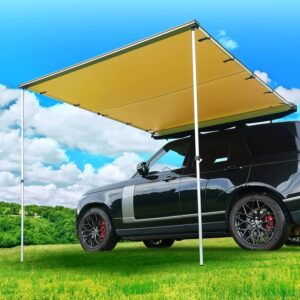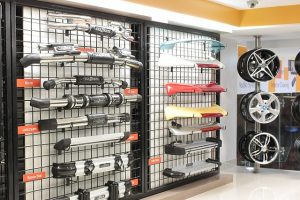Choosing a Vehicle as a Family Living in the Countryside

The type of car that is best suited to you will depend on where you live and your current situation. If you have a family and live in the countryside, for example, then your needs will be highly different from a young professional living in the city. It is important that you know what to look for in a vehicle so that you can choose one which will integrate with your life and never let you down.
Here is a look at the type of car that is well suited to those with a family living in the countryside.
Size
The most obvious aspect that you need to consider will be the size. You will need enough space to carry the entire family (and potentially more) with plenty of space and legroom so that long journeys are safe and comfortable. Fortunately, there are many excellent family vehicles and SUVs which are well suited to families that are perfect for countryside living.
Fuel efficiency
Rural living often involves longer distances and potentially fewer fuel stations. Opt for a vehicle with good fuel efficiency to reduce frequent refueling needs and minimize fuel costs.
Terrain capability
Reliability and durability
Rural areas may have limited access to repair shops and services. Select a vehicle known for its reliability and durability, with a track record of minimal mechanical issues. Research reviews and ratings to gauge the long-term reliability of different models.
Storage
It is likely that your trips out will involve carrying plenty of luggage in addition to the kids. This might include shopping, sports equipment, school supplies and anything else that a family needs to take with them. This is why you should also opt for a vehicle which has plenty of storage space so that you can take everything that you need and everyone can ride safely and comfortably.
Performance
If you live in the countryside then you will need a vehicle which is rugged enough to be able to handle off-road and dirt roads – 4x4s are perfect for this and very well suited to families in the countryside. In addition to this, it should also have responsive handling, good suspension and be easy to drive so that you can easily handle those weaving countries back roads.
Safety
Safety is always an important factor when it comes to motoring no matter what your situation, but it will be a top priority for any parent as they will want to protect their child. Modern day automobiles have all kinds of great safety features and technology so always look out for vehicles with a high Euro NCAP rating. These can also be found in the used car market at places like Imperial Cars.
Economy
Every motorist will want a vehicle with high MPG to keep running costs down. This is true for parents in the countryside as you will want to save money and you may find that you often have long drives on the motorway so high returns are important. If you can find a vehicle with high MPG and low emissions you can also save money on road tax and do your part for the environment.
When you are a family living in the countryside you need to find the perfect vehicle that will integrate seamlessly with your lifestyle. The above are the main factors to consider, all of which point to an SUV, 4×4 or large family vehicle being the best vehicles types for this particular group with many great options available.
Faqs
Q1: What is ground clearance, and why is it important for a countryside vehicle?
Ans: Ground clearance refers to the distance between the lowest point of a vehicle’s undercarriage and the ground. It is crucial in the countryside because it allows the vehicle to navigate uneven or off-road terrain without damaging its underside. Sufficient ground clearance helps prevent obstacles like rocks, potholes, or debris from causing damage.
Q2: What is the difference between four-wheel drive (4WD) and all-wheel drive (AWD)?
Ans: 4WD and AWD are drivetrain systems that distribute power to all four wheels of a vehicle. The main difference is that 4WD is typically used in off-road or rugged conditions, allowing the driver to manually engage or disengage the system as needed. AWD, on the other hand, automatically adjusts power distribution to each wheel based on traction requirements, making it suitable for various terrains and weather conditions.
Q3: Do I need four-wheel drive or all-wheel drive for countryside living?
Ans: It depends on the specific conditions and terrain you anticipate encountering. If you expect to frequently drive on unpaved roads, through mud, snow, or other challenging off-road conditions, a vehicle with 4WD or AWD can provide added traction and stability. However, if your driving primarily involves paved roads with occasional off-road adventures, a well-equipped front-wheel drive (FWD) or rear-wheel drive (RWD) vehicle with good ground clearance may suffice.
Q4: How can I determine if a vehicle has good off-road capabilities?
Ans: Several factors contribute to a vehicle’s off-road capabilities. Look for features such as higher ground clearance, off-road-tuned suspension, robust chassis construction, skid plates for undercarriage protection, and specialized off-road driving modes. Additionally, check the approach, departure, and breakover angles, as well as the availability of features like locking differentials or hill descent control, which can enhance off-road performance.
Q5: Are there specific tire requirements for countryside driving?
Ans: It is advisable to choose tires designed for off-road or all-terrain use. Look for tires with aggressive tread patterns that provide better traction on mud, snow, or gravel. All-terrain or mud-terrain tires are specifically designed to handle challenging terrains, providing enhanced grip and durability. Consider the climate and terrain you will encounter most frequently when selecting the appropriate tires for your vehicle.
Q6: Can I modify a vehicle for better terrain capability?
Ans: Yes, certain modifications can enhance a vehicle’s terrain capability. These include upgrading the suspension system, installing off-road tires, adding skid plates for undercarriage protection, or equipping the vehicle with auxiliary lighting for improved visibility in low-light conditions. However, it is important to consult with professionals and ensure that any modifications comply with local regulations.






